Kimono vs Hanbok vs Hanfu vs Ao Dai
The Ultimate Guide to Traditional Asian Garments
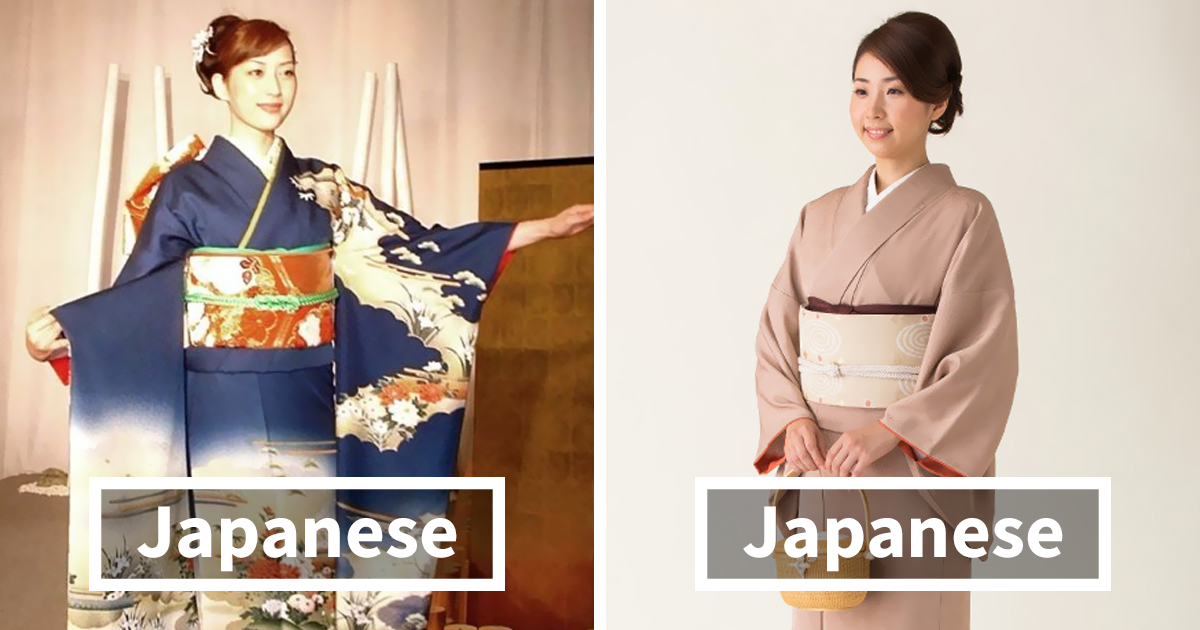
Traditional Asian garments represent centuries of cultural heritage, artistic expression, and symbolic meaning. Among the most recognizable are the Japanese kimono, Korean hanbok, Chinese hanfu, and Vietnamese ao dai.
Each garment tells a unique story of its nation’s history, values, and aesthetic principles. In this comprehensive guide, we’ll explore the fascinating differences and similarities between these iconic traditional outfits, with special attention to the kimono’s significance in Kyoto’s rich cultural landscape.
- Understanding the Cultural Context of Traditional Asian Garments
- Fabric and Craftsmanship: Regional Specialties
- Modern Revival and Cultural Significance
- Occasions and Cultural Context
- Photography and Traditional Garments: Capturing Cultural Beauty
- Preservation and Future of Traditional Garments
- Regional Variations and Specialized Styles
- Economic and Tourism Impact
- Conclusion: Celebrating Asian Cultural Diversity Through Traditional Dress
Understanding the Cultural Context of Traditional Asian Garments

The Kimono: Japan’s Timeless Elegance
The kimono, literally meaning “thing to wear,” represents the pinnacle of Japanese traditional fashion. Originating in the Heian period (794-1185), the kimono evolved from Chinese-influenced court dress into a distinctly Japanese garment. Kyoto, as Japan’s former imperial capital, became the epicenter of kimono craftsmanship and remains so today.
Key Characteristics of the Kimono:
- Silhouette: Straight-lined, T-shaped robe with wide sleeves
- Fabric: Premium silk, cotton, or synthetic materials
- Patterns: Seasonal motifs, nature-inspired designs, geometric patterns
- Colors: Sophisticated color combinations following traditional principles
- Accessories: Obi (wide sash), geta (wooden sandals), tabi (split-toe socks)
The kimono’s construction requires no cutting to fit the wearer’s body shape, reflecting Japanese aesthetic principles of harmony with natural forms. In Kyoto’s Gion district, geishas still wear elaborate kimono daily, maintaining traditions that date back centuries.
The Hanbok: Korea’s Graceful Lines
The Korean hanbok embodies the Confucian ideals of modesty and grace. Dating back over 2,000 years, the hanbok has maintained its essential structure while adapting to changing social norms and fashion trends.
Distinctive Features of the Hanbok:
- Structure: Jeogori (short jacket) and chima (full skirt) for women
- Silhouette: Curved lines creating an elegant, flowing appearance
- Colors: Vibrant primary colors with symbolic meanings
- Fabric: Silk, ramie, or cotton depending on social status
- Accessories: Norigae (decorative pendant), beoseon (white cotton socks)

The hanbok’s emphasis on curved lines contrasts sharply with the kimono’s geometric precision. While the kimono conceals the body’s natural shape, the hanbok accentuates the wearer’s grace through its flowing skirt and fitted jacket.
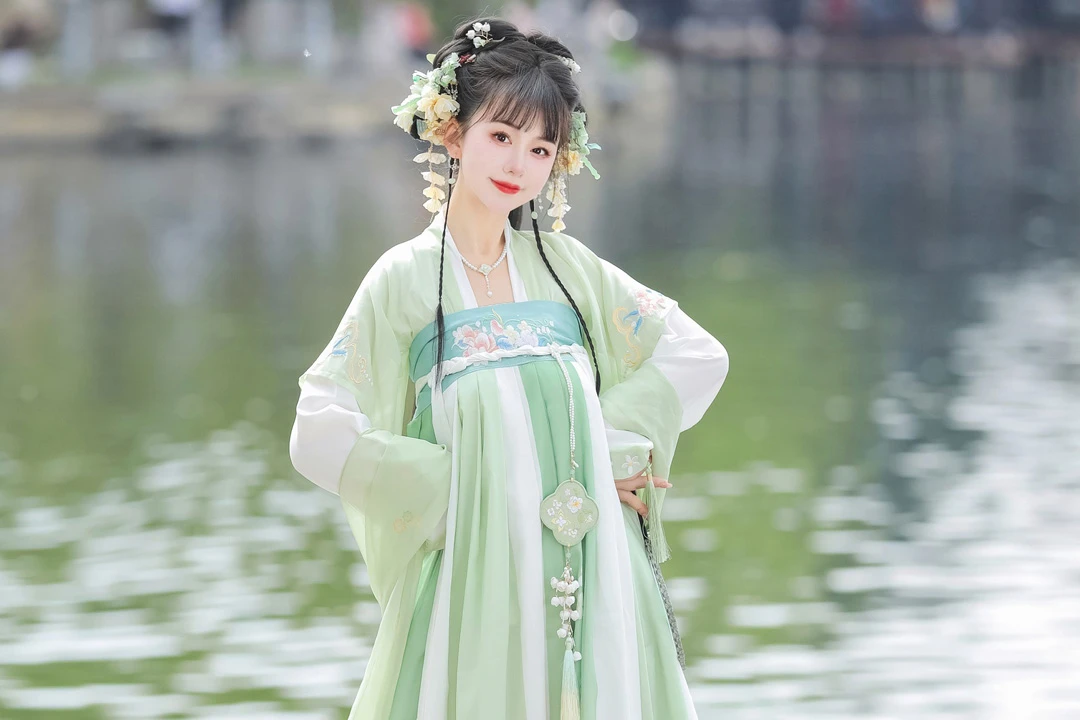
The Hanfu: China’s Ancient Elegance
The hanfu represents over 4,000 years of Chinese clothing evolution. As the traditional dress of the Han Chinese, it influenced many other Asian garments, including early forms of the kimono.
Hanfu Characteristics:
- Design: Wide sleeves, crossed collars, and flowing robes
- Variety: Multiple styles including ruqun, beizi, and aoqun
- Symbolism: Deep cultural and philosophical meanings
- Fabrics: Silk, hemp, and cotton with intricate embroidery
- Accessories: Hair ornaments, jade jewelry, and ceremonial belts
The hanfu’s influence on other Asian garments cannot be overstated. Its flowing sleeves and layered construction provided the foundation for kimono design, though each culture adapted these elements uniquely.
The Ao Dai: Vietnam’s Modern Traditional Wear
The ao dai, meaning “long dress,” represents Vietnam’s most recognizable traditional garment. While younger than other garments discussed, having evolved significantly in the 20th century, it combines traditional Vietnamese aesthetics with modern tailoring.
Ao Dai Features:
- Design: Form-fitting tunic worn over loose trousers
- Silhouette: Emphasizes the wearer’s natural body shape
- Materials: Silk, cotton, or modern synthetic fabrics
- Colors: Often white for students, various colors for different occasions
- Modern Adaptations: Contemporary designs for daily wearDetailed Comparison: Construction and Design Philosophy
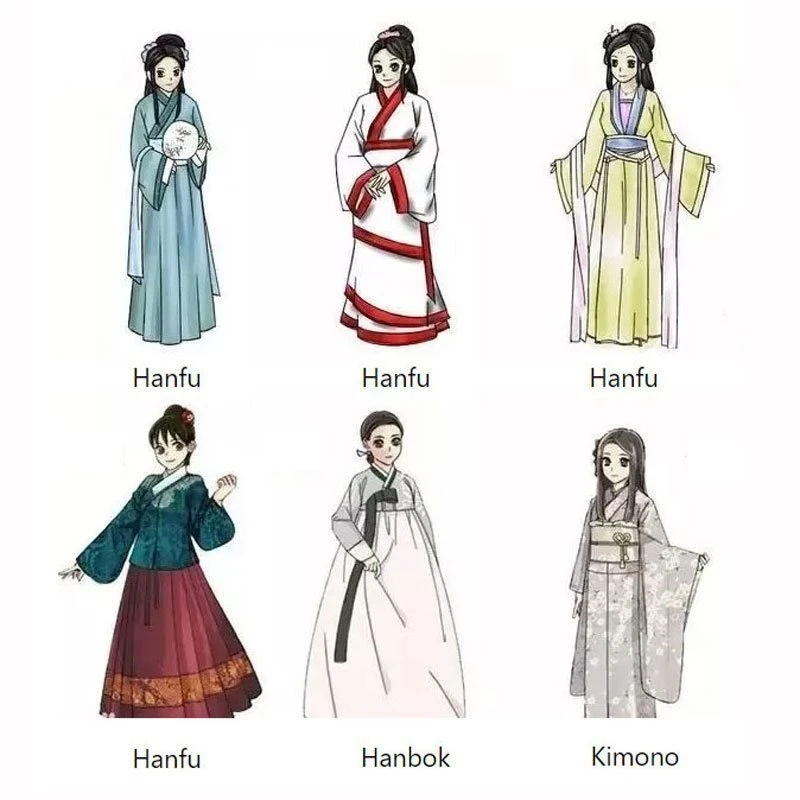
Silhouette and Fit Philosophy
The fundamental difference between these garments lies in their approach to the human form. The kimono creates a rectangular silhouette that de-emphasizes body curves, reflecting Japanese ideals of inner beauty and restraint. This philosophy aligns with Kyoto’s zen aesthetic, where simplicity and subtle elegance prevail.
The hanbok takes an opposite approach, using the contrast between the fitted jeogori and voluminous chima to create graceful curves. This design celebrates feminine beauty while maintaining modesty, embodying Korean Confucian values.
The hanfu varies significantly in style but generally features flowing, loose-fitting robes that create an ethereal, otherworldly appearance. Multiple layers and wide sleeves suggest scholarly refinement and connection to nature.
The ao dai stands apart by closely following body contours while maintaining coverage through its high neckline and full-length design. This represents Vietnam’s balance between tradition and modernity.
Color Symbolism and Cultural Meanings
Kimono Color Traditions
In Kyoto’s traditional color palette, seasons play a crucial role in kimono selection. Spring calls for cherry blossom pink and soft greens, summer embraces cool blues and whites, autumn features warm oranges and deep reds, while winter favors subdued purples and grays.
Hanbok Color Significance
Korean hanbok colors follow the obangsaek (five cardinal colors) system based on yin-yang philosophy. Red represents fire and joy, blue symbolizes wood and hope, yellow signifies earth and faith, white represents metal and righteousness, while black embodies water and wisdom.
Hanfu Color Philosophy
Chinese hanfu colors align with the Five Elements theory, where each color corresponds to natural elements and directions. Imperial yellow was reserved for emperors, while common people wore earth tones and natural dyes reflecting their connection to agriculture and nature.
Ao Dai Color Evolution
Vietnamese ao dai colors have evolved significantly, with white traditionally worn by students symbolizing purity and learning, while colorful variations represent celebration and personal expression in modern contexts.
Fabric and Craftsmanship: Regional Specialties
Japanese Silk Mastery in Kyoto
Kyoto’s Nishijin district has been the heart of Japanese textile production for over 1,200 years. The intricate weaving techniques developed here produce some of the world’s finest silk fabrics used in premium kimono. Master craftsmen still hand-weave obi using traditional methods, creating textiles that can take months to complete.
The process of creating a single kimono involves multiple specialists: silk weavers, dyers, pattern designers, and seamstresses. Each step requires years of training and represents a living tradition passed down through generations in Kyoto’s textile families.
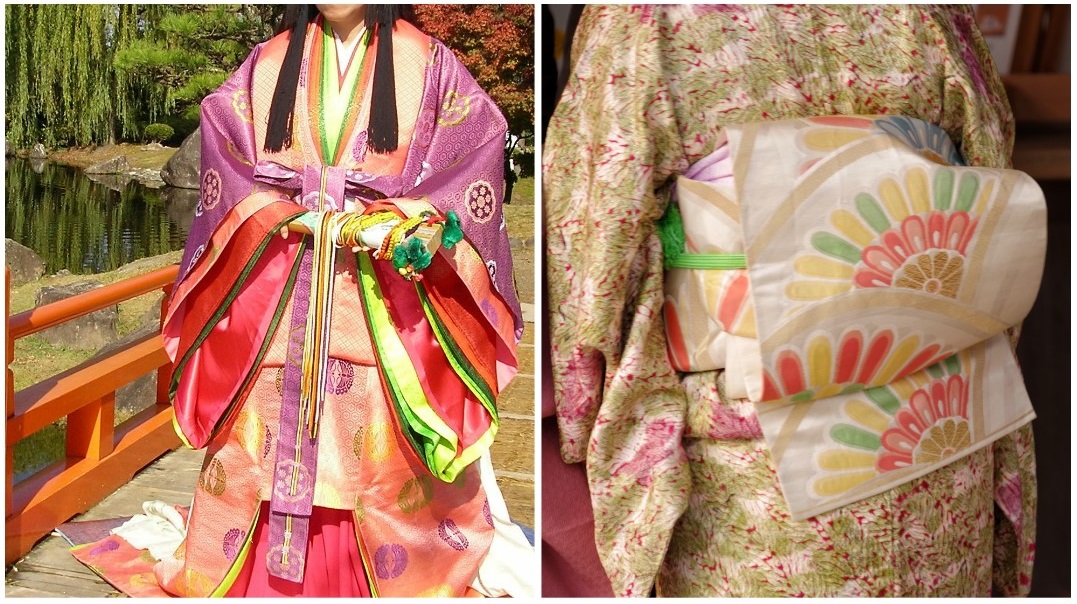
Korean Ramie and Silk Traditions
Korean hanbok craftsmanship emphasizes natural fibers, particularly ramie for summer garments and silk for formal occasions. The traditional dyeing process uses natural materials like indigo, madder root, and gardenia seeds, creating colors that age beautifully and represent Korea’s connection to nature.
Chinese Embroidery Excellence
Chinese hanfu is renowned for its intricate embroidery work, particularly silk thread embroidery featuring dragons, phoenixes, and floral motifs. These decorative elements aren’t merely ornamental but carry deep symbolic meanings related to luck, prosperity, and spiritual beliefs.
Vietnamese Tailoring Innovation
Modern ao dai construction combines traditional Vietnamese aesthetics with contemporary tailoring techniques. The precise fit requires skilled craftsmanship to achieve the garment’s signature silhouette while ensuring comfort and mobility.

Traditional Weaving Techniques
The preservation of traditional weaving and crafting techniques remains crucial for maintaining the authenticity of these garments. Each region has developed unique methods that reflect local materials, climate conditions, and cultural preferences, creating distinct characteristics that define each traditional dress style.
Modern Revival and Cultural Significance
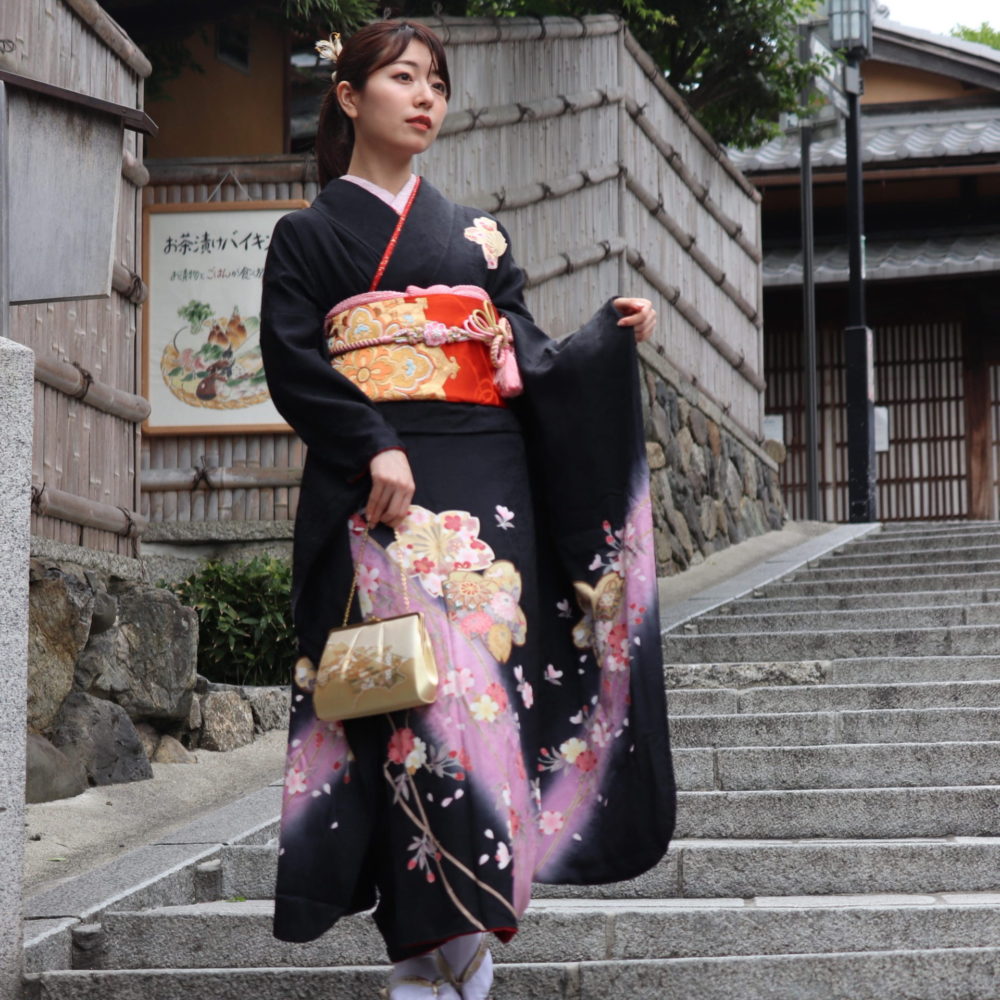
Kimono Renaissance in Kyoto
Contemporary Kyoto has witnessed a remarkable kimono revival, with young Japanese rediscovering their cultural heritage. Rental shops in the historic Gion and Arashiyama districts cater to both locals and international visitors eager to experience traditional Japanese culture firsthand.
Modern kimono designers in Kyoto are creating contemporary interpretations that maintain traditional construction while incorporating modern patterns and colors. This evolution ensures the kimono remains relevant for new generations while preserving ancient craftsmanship techniques.
Global Fashion Influence
Each of these traditional garments has influenced international fashion designers. The kimono’s sleeve shapes appear in modern Western clothing, hanbok’s color combinations inspire contemporary Korean fashion, hanfu elements feature in Chinese haute couture, and ao dai’s fitted silhouette influences Vietnamese-inspired designs worldwide.

Occasions and Cultural Context
Seasonal Celebrations and Ceremonies
Kimono Occasions in Kyoto
- • Cherry blossom viewing (hanami) in spring
- • Summer festivals and fireworks displays
- • Autumn leaf viewing in temple gardens
- • New Year celebrations at shrines
- • Coming-of-age ceremonies (seijin-shiki)
- • Wedding ceremonies and tea ceremonies
Hanbok Celebrations
- • Lunar New Year (Seollal)
- • Korean traditional weddings
- • First birthday celebrations (doljanchi)
- • Harvest festivals (Chuseok)
- • Coming-of-age ceremonies
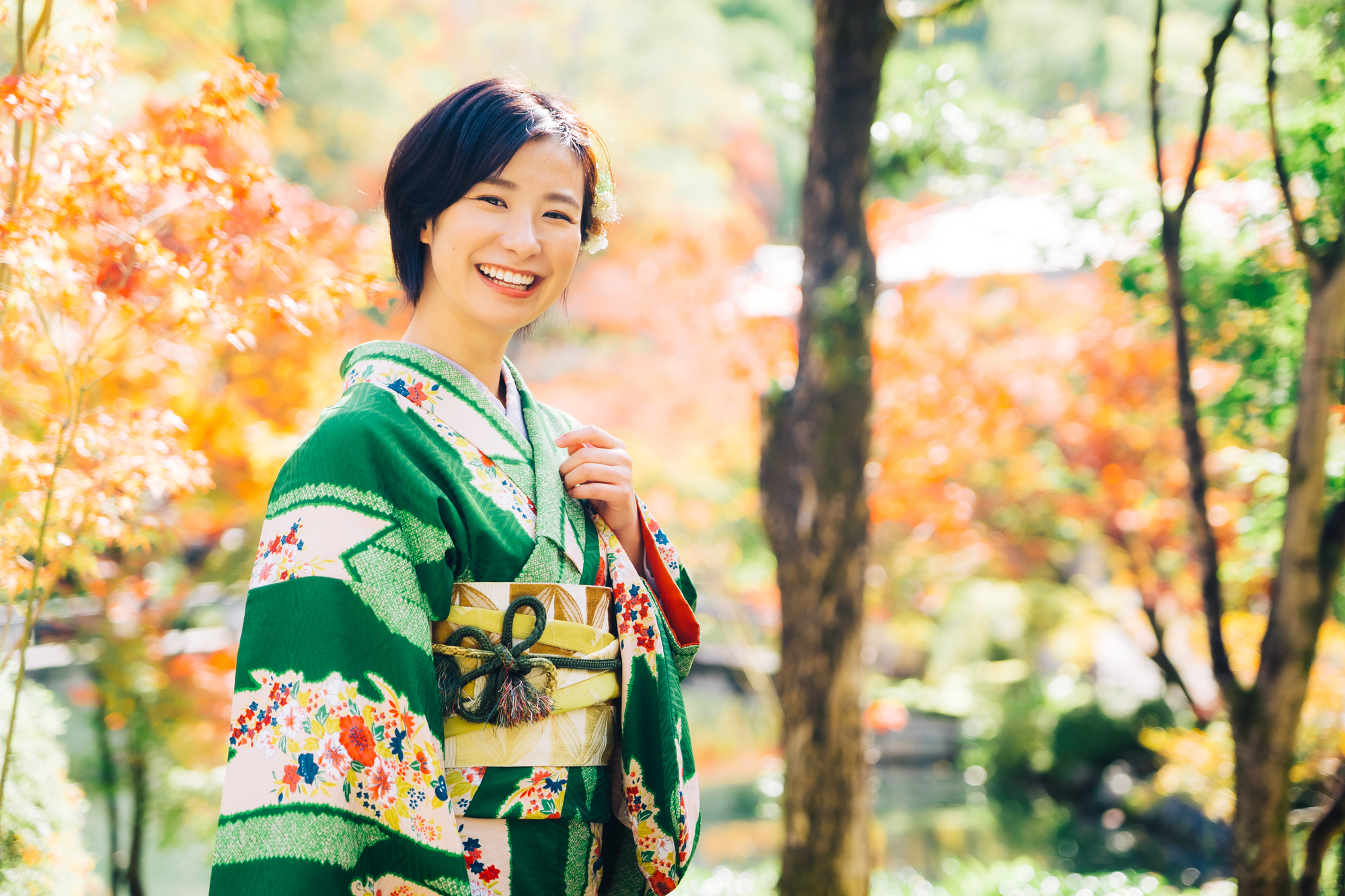
Hanfu Revival Events
- • Traditional Chinese festivals
- • Cultural heritage celebrations
- • Wedding ceremonies
- • Academic ceremonies
- • Cultural education events
Ao Dai Occasions
- • Tet (Vietnamese New Year)
- • School graduations
- • Wedding ceremonies
- • Cultural festivals
- • National celebrations
Kyoto’s numerous temples and traditional neighborhoods provide perfect settings for experiencing kimono culture. The city’s seasonal festivals offer opportunities to observe how different kimono styles reflect changing seasons and ceremonial purposes.
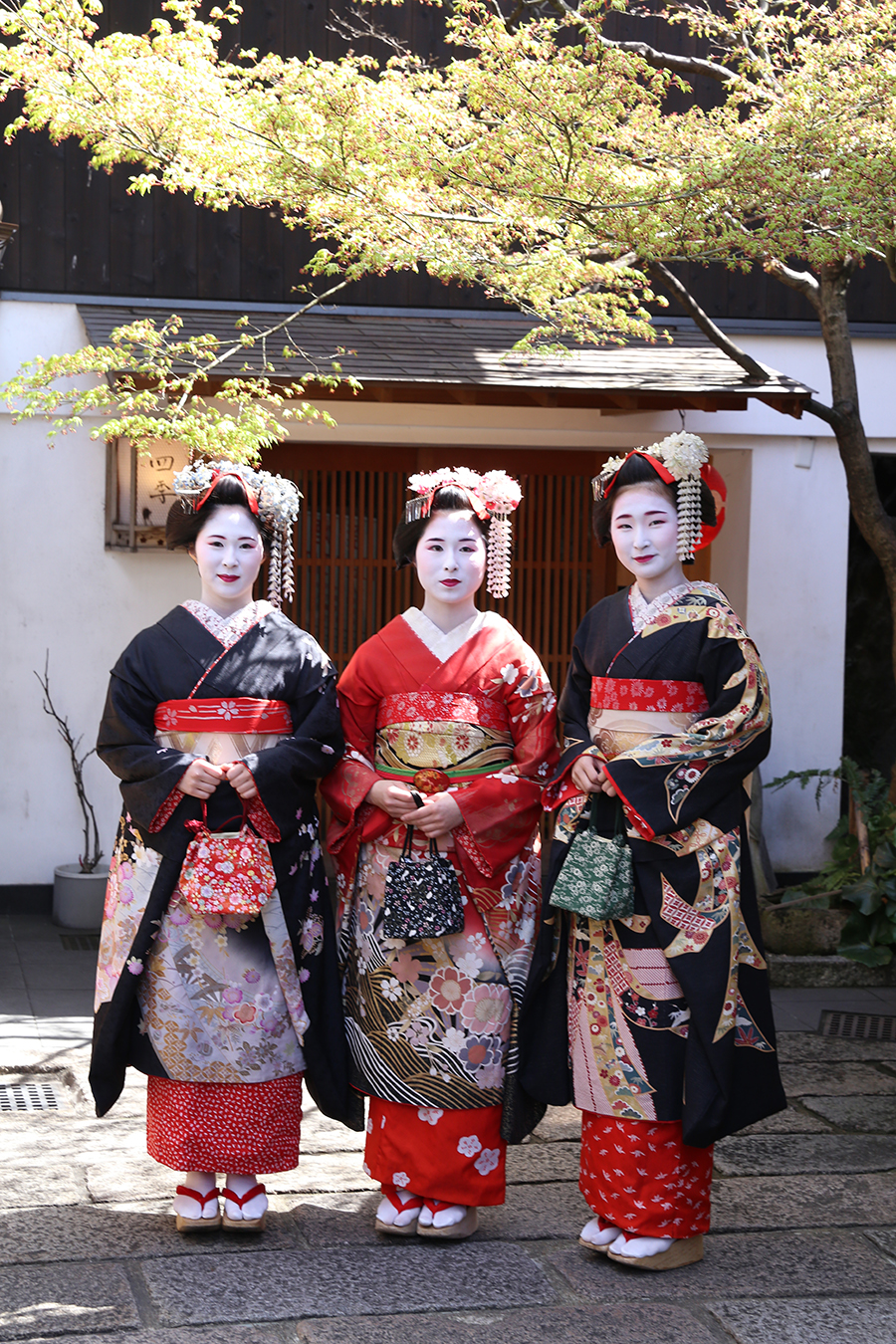
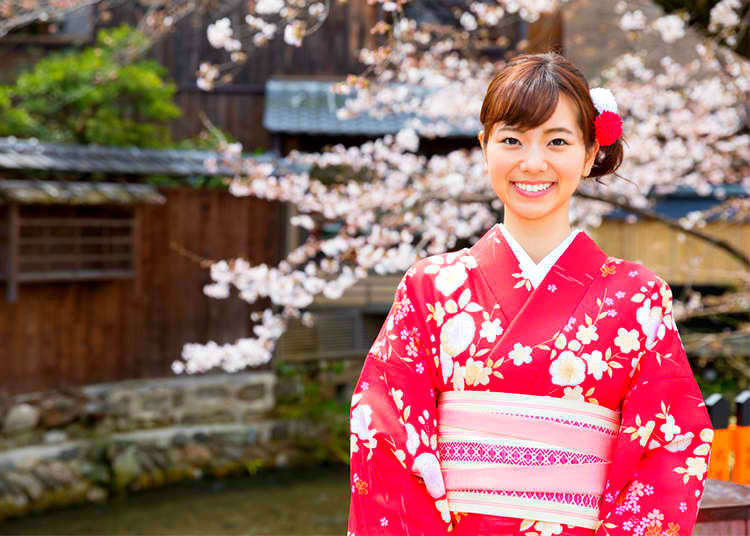
Photography and Traditional Garments: Capturing Cultural Beauty
When photographing these traditional garments, understanding their cultural significance enhances the artistic result. Kyoto offers exceptional opportunities for kimono photography, with its historic architecture, traditional gardens, and seasonal beauty providing perfect backdrops.
Professional photography sessions featuring traditional Asian garments require sensitivity to cultural meanings and proper representation. The interplay between traditional clothing and historic settings creates timeless images that celebrate cultural heritage while creating beautiful memories.
For visitors to Kyoto interested in capturing the beauty of traditional Japanese culture, professional photography services specializing in kimono portraits offer expert guidance on proper wearing, posing, and location selection. These sessions provide authentic cultural experiences while creating lasting memories of Japan’s artistic heritage.
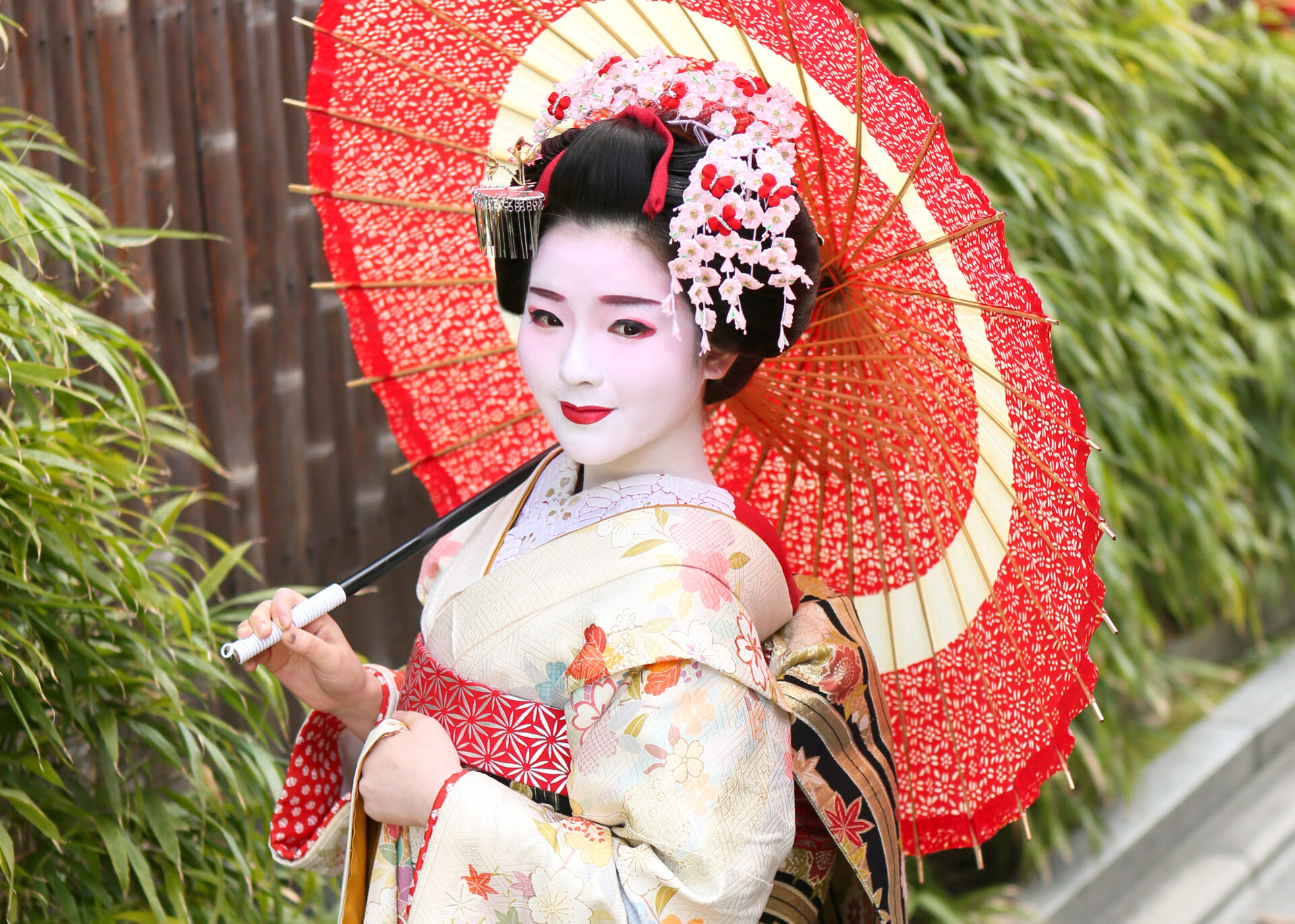

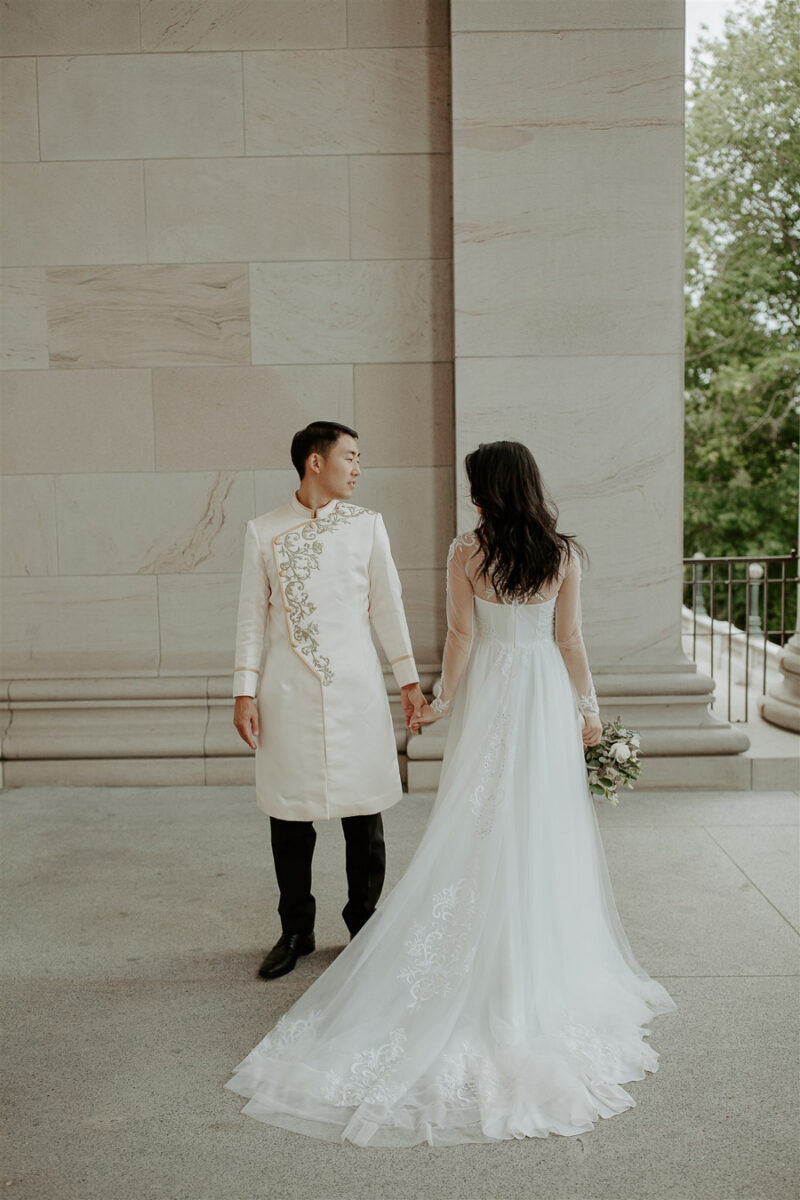
Preservation and Future of Traditional Garments
Maintaining Artisan Traditions
The survival of these traditional garments depends on preserving the artisan skills required for their creation. Kyoto’s textile workshops continue training new generations in ancient techniques, ensuring these cultural treasures remain available for future generations.
Government initiatives, cultural organizations, and private enterprises work together to support traditional craftspeople. Master artisans share their knowledge through apprenticeship programs, maintaining the human connections essential to preserving these cultural arts.
Educational and Cultural Programs
Museums, cultural centers, and educational institutions play crucial roles in teaching younger generations about traditional garment significance. Interactive exhibitions, workshops, and cultural exchange programs help people understand these garments as living cultural expressions rather than mere historical artifacts.
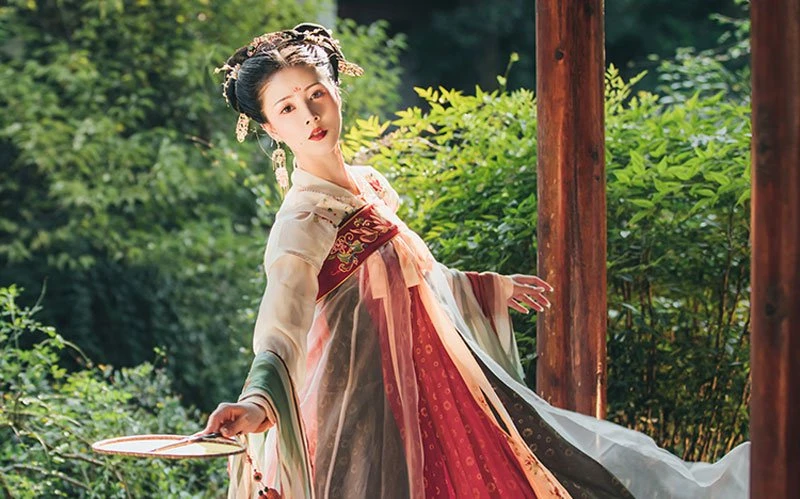
Sustainable Fashion and Traditional Techniques
Modern sustainability movements have renewed interest in traditional garment construction techniques. The kimono’s waste-free pattern cutting, hanbok’s natural dye processes, hanfu’s durable construction methods, and ao dai’s tailoring precision offer lessons for contemporary sustainable fashion.

These traditional construction methods emphasize quality over quantity, durability over disposability, and cultural meaning over mere fashion trends – principles that align perfectly with contemporary sustainable fashion movements.
Regional Variations and Specialized Styles
Kimono Regional Differences
Even within Japan, kimono styles vary significantly between regions. Kyoto kimono tend toward sophisticated subtlety with muted colors and refined patterns, reflecting the city’s aristocratic heritage. Tokyo styles might be more contemporary, while regional areas maintain distinct local characteristics in pattern, color, and construction details.
Hanbok Provincial Styles
Korean hanbok varies between regions, with northern styles featuring more subdued colors and southern variants embracing brighter hues. Court hanbok differs significantly from commoner versions, with elaborate decorations and premium materials reserved for nobility.
Hanfu Dynasty Variations
Chinese hanfu encompasses numerous historical periods, each with distinct characteristics. Tang Dynasty styles feature wide sleeves and flowing robes, Ming Dynasty versions show more structured silhouettes, while Han Dynasty garments emphasize simplicity and elegance.
Ao Dai Regional Adaptations
Vietnamese ao dai styles vary between northern, central, and southern regions, with differences in cut, decoration, and wearing customs reflecting local cultural preferences and climate considerations.
Economic and Tourism Impact
Cultural Tourism and Traditional Garments
Traditional garment experiences contribute significantly to cultural tourism economies. Kyoto’s kimono rental industry generates substantial revenue while providing authentic cultural experiences for visitors. This economic model demonstrates how traditional culture can thrive in modern contexts while maintaining authenticity.
Similar trends appear across Asia, with hanbok experiences in Seoul, hanfu activities in Chinese cultural sites, and ao dai tours in Vietnamese cities contributing to local economies while preserving cultural traditions.
Artisan Economy Support
The traditional garment industry supports numerous artisan communities, from silk weavers and dyers to embroiderers and seamstresses. These specialized skills represent irreplaceable cultural knowledge that generates economic value while preserving intangible cultural heritage.
Conclusion: Celebrating Asian Cultural Diversity Through Traditional Dress
The comparison between kimono, hanbok, hanfu, and ao dai reveals the rich diversity of Asian cultural expression through clothing. Each garment represents unique philosophical approaches to beauty, modesty, social structure, and relationship with nature. While sharing some common historical influences, each has evolved distinctly to reflect its culture’s values and aesthetics.
Understanding these differences enhances appreciation for the complexity and sophistication of Asian traditional cultures. Whether experiencing the refined elegance of a Kyoto kimono, the graceful curves of a Korean hanbok, the flowing beauty of Chinese hanfu, or the modern elegance of a Vietnamese ao dai, each garment offers insights into the civilization that created it.
For contemporary audiences, these traditional garments provide connections to cultural roots, artistic inspiration, and sustainable fashion principles. Their continued evolution demonstrates how traditional culture can remain vibrant and relevant while maintaining essential cultural identity.
The preservation of these clothing traditions requires ongoing effort from artisans, cultural institutions, and communities worldwide. By understanding, appreciating, and supporting these cultural treasures, we ensure their survival for future generations to discover, enjoy, and learn from.
As globalization continues to influence fashion and culture worldwide, these traditional garments remind us of the value of cultural diversity and the importance of preserving unique artistic expressions. Each kimono, hanbok, hanfu, and ao dai carries forward thousands of years of human creativity, wisdom, and beauty – treasures that enrich our shared human heritage.
Celebrating Cultural Heritage
Through Traditional Dress
Whether you’re planning to experience traditional dress in Kyoto’s historic districts, exploring Korean cultural centers, visiting Chinese heritage sites, or discovering Vietnamese traditions, these garments offer gateways to understanding the profound beauty and complexity of Asian civilizations. Through respectful appreciation and authentic cultural engagement, we can help ensure these magnificent traditions continue to inspire and educate future generations about the enduring power of human artistic expression.
Experience Traditional Japanese Culture
Experience the beauty of traditional Japanese culture in Kyoto. For professional photography sessions featuring authentic kimono in historic settings, visit AllPhoto Kyoto to capture memories that will last a lifetime.
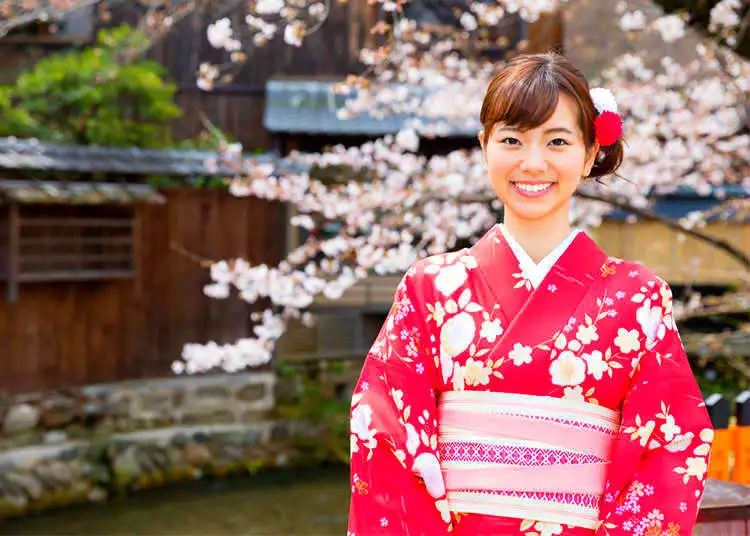


コメント